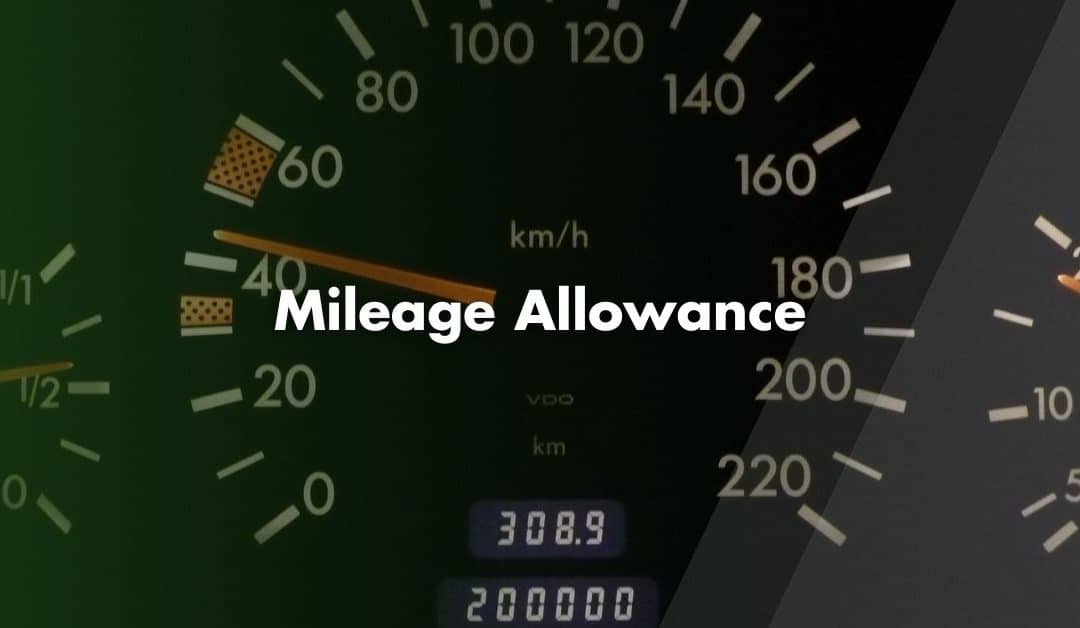If you regularly use your personal vehicle for work, Mileage Allowance could help you save money and reduce your tax liability.
What is Mileage Allowance?
Mileage Allowance is a tax-free reimbursement for individuals who use their own vehicle for work-related journeys. These payments are meant to cover the running costs of using your vehicle for business purposes, such as fuel, insurance, servicing and general wear and tear.
The amount you claim depends on the type of vehicle and the number of business miles driven. HMRC has set approved mileage rates, which have remained unchanged since the 2011/12 tax year. Staying within these rates ensures the payments are tax-free.
Who Can Claim Mileage Allowance?
Employees are eligible when using their personal vehicles for travel between work sites, meetings or business-related activities. Routine commuting to a single workplace does not qualify.
Self-employed individuals can also claim milage using either the simplified expenses method or by calculating actual vehicle costs and deducting the business-use portion.
The best method depends on your level of vehicle use and your preference for record-keeping.
HMRC-Approved Mileage Rates (2025/26)
- Cars and Vans – 45p per mile for the first 10,000 miles and 25p per mile thereafter
- Motorcycles – 24p per mile
- Bicycles – 20p per mile
- Passengers – 5p per mile per passenger (for business journeys)
These rates apply whether you are employed or self-employed and using the Flat Rate method. Always check the latest HMRC guidance.
The Flat Mileage Rate
The Flat Mileage Rate, also known as Simplified Expenses, is the most straightforward way to claim for business mileage. It involves multiplying the number of qualifying miles driven by HMRC’s standard rates. There is no need to collect receipts for individual costs like fuel, maintenance or insurance.
For example: Driving 8,000 business miles in a tax year would allow you to claim £3,600 (8,000 x 0.45). Once you exceed 10,000 miles, the rate drops to 25p per additional mile.
This method suits sold traders and small business owners who prefer ease and consistency. However, once selected for a vehicle, this method must be used for its entire working life.
How to Claim Mileage Allowance
For Employees
Employees should submit a mileage log to their employer, detailing:
- Trip dates
- Start and end locations
- Business purpose
- Number of miles travelled
Employers can pay the allowance monthly or as a lump sum. As long as the rates do not exceed HMRC’s approved limits, the payment remains tax-free.
For the Self-Employed
Self-employed individuals can claim either:
- Flat Rate (Multiply business miles by the approved rate)
- Actual Expenses (Track all motoring costs and claim the business-use portion)
The Flat Rate is easier, which the Actual Expense method can offer greater deductions for those with high vehicle-related costs.
Overpayments and Underpayments
Overpayments – If an employer reimburses more than the approved rate, HMRC will consider the excess a taxable benefit which is reportable.
Underpayments – If an employer reimburses less than the approved rate, you may claim Mileage Allowance Relief (MAR) on your tax return for the shortfall.
Mileage Allowance vs Company Car
Choosing Mileage Allowance over a company car often results in tax savings. HMRC taxes company cars based on their list price and CO2 emissions, while fuel for private use attracts an additional tax benefit known as thee Fuel Benefit Charge.
For 2025/26, the Fuel Benefit multiplier is £28,200 which can significantly increase your tax liability. Mileage Allowance, by contrast, offers more flexibility and avoids these charges.
Contact Us
We are not just accountants; we are Chartered Accountants with one of the most reputable and premium accounting bodies. We are registered and regulated by ACCA; so you can rest assured that you are in good hands. Knowing this, don’t hesitate to get in touch with us if you require assistance: Pi Accountancy | Contact Us
This article is for general informational purposes only and does not constitute legal or financial advice. While we aim to keep our content up to date and accurate, UK tax laws and regulations are subject to change. Please speak to an accountant or tax professional for advice tailored to your individual circumstances. Pi Accountancy accepts no responsibility for any issues arising from reliance on the information provided.

